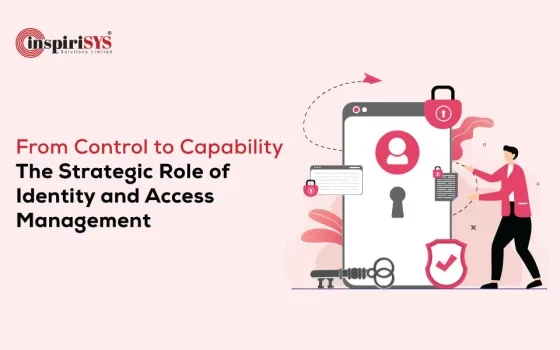Introduction
Critical data are the information that is crucial to the operational administration of a business. If the data gets compromised, the business becomes exposed to a risk that could lead to various sublime crises such as financial losses, bankruptcy, legal issues, and in certain scenarios even leading to a closure.
Over the last few years, businesses and high-level organizations have been losing their critical data. Retailers, banks, and credit card organizations have had their customer databases exposed. Government offices and agencies have not been spared as they have had their emails and data compromised.
cyber-criminals have been threatening to attack the critical data of companies to disrupt their services. Thus, business organizations need to secure and protect critical data.
Unfortunately, most businesses themselves are not aware of what their critical data are and how a breach in their safety could diminish the ongoing proceedings of the organization.
What about Network Security?
Network security is a broad term that covers various aspects of the technologies, devices, and processes involved. In its simplest terms, it is a sector collection of rules and configurations mainly designed to protect the integrity, confidentiality, and accessibility of computer networks and critical data using both the aid of software and hardware technologies.
Every firm, regardless of its size, industry, or infrastructure, requires a certain level of network security solutions to protect it from the ever-growing cyber threats in the current phase.
Today’s network architecture is indeed complex and is faced with a threat of an environment that is always evolving and attackers that are always on the edge trying to find and exploit even the minute vulnerabilities in the system.
This frangibleness can exist in a broad spectrum including devices, data, applications, users, and locations. For this particular reason, there are many network security management tools and applications in utilization today that address various individual threats and exploits and also cover regulatory non-compliance.
In the current fast-paced environment, even just a few minutes of downtime can cause widespread disruption and result in massive damage to an organization’s bottom line and reputation, for this reason, these safety and protection measures must be in place.
Network Security safeguards your network and data from breaches, intrusions, and various other threats. This is an extensive and overarching term that describes hardware and software solutions as well as processes the rules and configurations relating to network use, accessibility, and overall threat protection in question.
It is a no-brainer that the network needs security against attackers and hackers. Network Security includes two basic securities.
- The security regarding data information i.e., to protect the information from unauthorized access and mislaying.
- Computer security i.e., to protect data and to thwart hackers.
Today every business or firm has a mobile app that helps them connect more easily and swiftly with their customers. And if that business does not implement proper security measures, they may be putting their brand at high risk of data exposure. Mobile devices span multiple operating systems and are given the distributed nature of components, It is also to be noted that security associated with mobile apps often encounters problems.
Did you know?
According to a survey published by The Times, more than 75% of mobile applications in the market will fail basic security tests.
Employees use mobile applications which they downloaded from app stores that can access enterprise assets or perform business functions. Unfortunately, these applications are vulnerable and have little or no security to offer.
They are widely exposed to attacks and violations of enterprise security policies most of the time. For this reason, the organization is advised to follow a proper mobile app security checklist.
Prioritize your security concerns
Below are a few methods to ensure that network security is well in place.
TYPES OF NETWORK SECURITY DEVICES
These security-orientated devices block the surplus traffic. Firewalls, antivirus scanners, and content filtering devices are a few examples of such devices.
These devices are used to identify and report the unwanted traffic that is generated, for example, intrusion detection appliances.
These devices scan the networks and identify potential security problems and issues. Eg, penetration testing devices and vulnerability assessment appliances.
- Unified Threat Management (UTM)
These devices serve as all-in-one security devices and are considered the principal device in the offering. Firewalls, content filtering, web caching, etc., are examples.
A firewall is a network security structure that regulates and manages the network traffic based on predefined protocols. It initiates a barrier between the trusted outward internet and the internal network.
Firewalls are made both as software that runs on hardware as well as external hardware appliances. Firewalls that are hardware-oriented also supply other functions such as DHCP server for that certain network.
An ideal firewall setup consists of both hardware and software-based devices. A firewall also helps in providing remote access to a private network through certain secure authentication certificates and logins.
- Hardware and Software Firewalls
Hardware firewalls are standalone products. These are also found in broadband routers. Most hardware firewalls provide a minimum of four network ports to connect the other computers.
Software firewalls are installed on your computers and as mentioned earlier this is preferred mainly for personal computers. A software firewall protects your computer from internet threats and attacks.
An antivirus is software that is used to identify and remove malicious software. It was originally made to detect and remove viruses from computers.
Modern antivirus software provides protection not only from viruses but also from worms that have the potential to rupture the system, Trojan-horses, ad wares, spyware, keyloggers, etc. Some antivirus products also protect malicious URLs, spam, phishing attacks, botnets, DDoS attacks, etc.
Content filtering devices look for unpleasant and offensive emails or web pages. These are a part of firewalls in corporations as well as in personal computers. These devices generate the message “Access Denied” when someone tries to access any unauthorized web page or email, which is usually preset by the organization.
Content filtering can be categorized into−
- Web filtering
- Screening of Web sites or pages
- E-mail filtering
- Screening of email for spam
- Other objectionable content
- Intrusion Detection Systems
Intrusion Detection Systems, also known as Intrusion Detection and Prevention Systems, are the appliances that monitor malicious activities in a particular network, logging information about such activities, take steps to stop them, and finally report them.
Intrusion detection systems help in dispatching an alarm against any malicious activity that occurs in the network, drop the packets, and reset the connection to save the IP address from any blockage. Intrusion detection systems can also perform −
- Correct Cyclic Redundancy Check (CRC) errors
- Prevent TCP sequencing issues
- Clean up unwanted transport and network layer options
Below are a few methods to ensure mobile application security:
Enforce Strong Authentication
To prevent unauthorized access and password guessing attacks, you ought to implement multi-factor authentication. The three major factors for authentication are
- something that a user knows, like a password or PIN
- something the user has, like a mobile device
- or something the user is, like a fingerprint.
Combining password-based authentication with a client certificate, device ID, or one-time password remarkably reduces the peril of unauthorized access. You can also implement time-of-day and location-based restrictions to terminate fraud.
ENCRYPT MOBILE COMMUNICATIONS
With threats like snooping and man-in-the-middle attacks over Wi-Fi and cellular networks, IT should confirm that each communication between mobile apps and app servers is encrypted. Strong encryption that leverages 4096-bit SSL keys and session-based key exchanges can prevent even the foremost determined hackers from decrypting communications. Apart from encrypting traffic, IT should make sure that data at rest — the sensitive data stored on phones of users — is also encrypted. For ultra-sensitive data, it’d want to stop data from ever being downloaded to the top user device in the least.
PATCH APP AND OPERATING SYSTEM VULNERABILITIES
Recent Android and iOS vulnerabilities like Stagefright and XcodeGhost have exposed mobile users to attack. In addition to mobile OS flaws, IT must deal with a never-ending succession of app updates and fixes. To protect mobile users from attacks, IT should check mobile devices and make sure that the newest patches and updates are applied.
PROTECT AGAINST DEVICE THEFT
Every year, many mobile devices are lost or stolen. To ensure sensitive data doesn’t find you in the wrong hands, IT should provide how to remotely wipe sensitive data Or — better yet — make sure data isn’t stored on mobile devices in the first place.
For employee-owned devices, IT should wipe or lock corporate information while leaving personal files and apps intact. When the device is replaced or found, IT should be ready to quickly restore users’ apps and data.
SCAN MOBILE APPS FOR MALWARE
Eliminate adware and malware by testing apps for malicious behavior. Malware is often detected using virtual sandboxing or signature-based scanning tools. For mobile workspace or virtual mobile solutions, run malware scans on the server.
PROTECT APP DATA ON YOUR DEVICE
Make sure developers aren’t storing any sensitive data on their devices. If you want to store data on a tool for a few reasons, first confirm it’s encrypted/protected. Only store it in files, data stores, and databases. If you employ the newest encryption technologies, you’ll get a better level of security.
SECURE THE PLATFORM
Your platform should be properly controlled and secured. This process consists of finding out jailbroken phones and restricting access to other services when needed.
PREVENT DATA LEAKS
IT must separate business apps from personal apps to avoid data leaks while still allowing users to put in personal apps on their mobile devices. Creating secure mobile workspaces helps prevent malware from getting incorporated apps and ceases users from copying, saving, or sharing sensitive data.
For ironclad data leak prevention:
- Control clipboard access to stop copy and paste functions
- Block screen captures
- Prevent users from downloading confidential files to their phone or saving files on file sharing sites or connected devices or drives.
- Watermark sensitive files with users’ usernames and timestamps
OPTIMIZE DATA CACHING
Mobile devices usually store cached data to reinforce an app’s performance. This is a serious explanation for security issues because those apps and devices become more vulnerable and it’s relatively easy for attackers to breach and decrypt the cached data. This often leads to stolen user data. You can require a password to access the appliance just if your data’s character is extremely sensitive. This will help reduce vulnerabilities related to cached data.
ISOLATE APPLICATION INFORMATION
You will need to separate all the information that is accessed through a mobile device from a user’s data. This process of isolating information does require a couple of levels of protection around enterprise-deployed apps. This way, corporate data will be separated from the employee’s private data because of the consumer-facing application. This process of isolating data should increase your customers’ satisfaction and productivity, all while ensuring they’re compliant together with your security rules. Using a container-based model can assist you out in this case. Security is usually stricter and won’t compromise at any level of transmission. This ultimately helps eliminate the danger of corporate data loss.
IMPACT OF CYBER-ATTACK ON YOUR BUSINESS
A successful cyber breach can cause paramount damage and setback to your business. It can affect your proceedings, as well as your business’ standing and consumer trust, in severe cases even closure. The impact of a security breach can be broadly divided into three categories: Namely, financial, reputational, and legal.
THE ECONOMIC COST OF CYBER ATTACK
Cyber-attacks often result in a substantial financial loss arising from:
- theft of corporate information and data
- theft of financial information, like bank and card details
- theft of money/ credit
- disruption to trading (e.g., inability to carry out certain transactions)
- loss of business or contract agreements
- Repair works costs
- Device costs
REPUTATIONAL DAMAGE
Trust is an essential element of customer relationships and business growth. Cyber-attacks can defile your business’ reputation and damage the trust your customers have for you and the firm. This, in turn, could potentially lead to various setbacks such as:
- loss of customers resulting in a decline in the customer base
- loss of sales and businesses
- reduction in profits generation
- Impact on supplies
- Friction in the relationship between the investors and firm
LEGAL CONSEQUENCES OF A CYBER BREACH
Data protection and privacy laws and acts require you/the firm to manage the security of all personal data that you hold in your possession — whether on your staff or your customers. If this data is in any case accidentally or deliberately compromised by the firm, and suppose you stand to have failed to deploy appropriate security measures that are required from your side, you may face fines and regulatory sanctions depending on the laws set by your jurisdiction.
How to lower the effect of cyber-attacks on businesses?
Security breaches can devastate even the most resilient of business firms and organizations. For this reason, It is extremely important to manage the risks accordingly. After an attack has taken place, an effective cybersecurity incident response plan can help you:
- reduce the impact of the attack caused
- report the incident to the concerned authority
- Make sure to clean up the affected systems and networks
- get your business back, up and running as soon as possible to evade the financial setbacks
Conclusion:
Before setting up your business/ organization — or even in the case of already running one — try to implement all the necessary security checklists and protocols. It will help you protect your business from any fraud or loss and strengthen your relationship with your investors and customers.
For more information on the topic go to Innovature’s security testing page.

Originally published at https://innovature.ai on May 19, 2021.





















